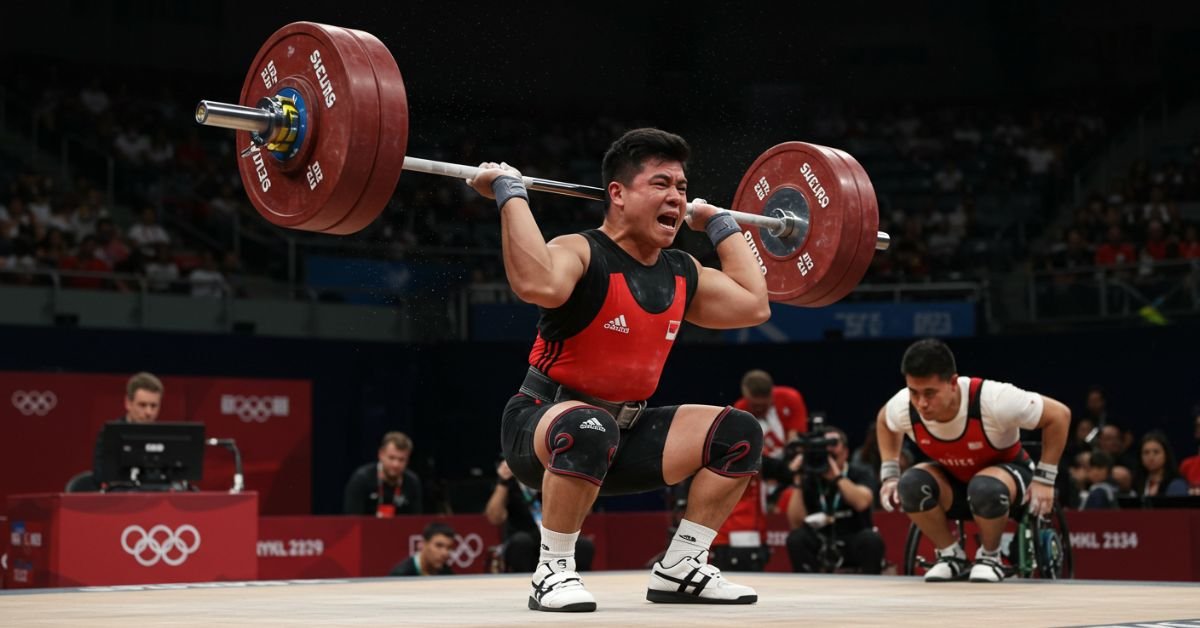Contents
- 1 Introduction
- 2 What Is Paralympic Powerlifting?
- 3 A Brief History of Powerlifting at the Paralympics
- 4 How Does It Work?
- 5 Who Can Compete?
- 6 🇭🇺 Hungary and Erőemelés Paralimpia
- 7 🌟 Inspirational Athletes Who Redefined Strength
- 8 Why It Matters?
- 9 🧠 Mental & Physical Training
- 10 📈 Future of Paralympic Powerlifting
- 11 ✅ Conclusion
Introduction
When we think of strength sports, we often imagine ripped muscles and heavy iron. But **Paralympic powerlifting—erőemelés paralimpia in Hungarian—**isn’t just about muscle. It’s about unbreakable willpower, fierce determination, and defying every odd.
Paralympic powerlifting is a sport that takes the bench press to a new level. Athletes with lower limb disabilities compete on equal terms, lifting weights that many able-bodied lifters can only dream of. In this article, we’ll explore what erőemelés paralimpia is, how it works, who participates, and why it’s one of the most inspiring sports in the world.
What Is Paralympic Powerlifting?
Paralympic powerlifting is a strength sport for athletes with physical impairments, specifically lower limb disabilities. Unlike traditional powerlifting (which includes squat, deadlift, and bench press), Paralympic powerlifting focuses solely on the bench press.
Athletes lie on a specially designed bench and press the barbell from their chest to full arm extension, all under strict control and technique.
Key Facts:
- 🔹 Only bench press is included
- 🔹 Open to both men and women
- 🔹 Athletes grouped by weight class, not by disability
- 🔹 Governed by World Para Powerlifting, part of the International Paralympic Committee (IPC)
A Brief History of Powerlifting at the Paralympics
Powerlifting made its Paralympic debut in 1964 as part of the Tokyo Games, originally under the name “weightlifting”. In 1992, it evolved into what we now know as Paralympic powerlifting, becoming a standalone sport.
Since then, it has:
- Expanded to over 100 countries
- Grown in participation from just a few athletes to hundreds
- Produced world records that rival Olympic-level feats
How Does It Work?
Paralympic powerlifting competitions are judged not only on the amount of weight lifted but on form, control, and precision. Here’s how a typical lift works:
- The athlete is strapped to the bench for safety.
- They must lower the bar to their chest, pause, and press it back up.
- The lift must be completed without the bar wobbling, dipping, or uneven arm lockout.
Three referees determine whether the lift is “good” or “no lift”. Each athlete gets three attempts, and the heaviest successful lift counts.
Who Can Compete?
Any athlete with an eligible physical impairment that impacts their lower limbs or hips can compete. Common conditions include:
- Spinal cord injuries
- Amputations
- Cerebral palsy
- Polio effects
- Lower limb deformities
Unlike many Paralympic sports, no complicated classification system is used. All athletes compete within their bodyweight class, making it one of the most inclusive sports at the Paralympics.
🇭🇺 Hungary and Erőemelés Paralimpia
Hungary has shown increasing interest in Paralympic powerlifting. Several Hungarian athletes have taken part in European and World Para Powerlifting Championships, supported by the Hungarian Paralympic Committee.
Though not yet a powerhouse in the sport, Hungary’s infrastructure for adaptive athletics is growing, and the country is fostering more support for athletes with disabilities. With consistent investment, Hungary could soon emerge as a major player on the Paralympic powerlifting scene.
🌟 Inspirational Athletes Who Redefined Strength
💪 Siamand Rahman (Iran)
Often referred to as the strongest Paralympian ever, Rahman made history by lifting 310 kg (683 lbs) in Rio 2016. His story is legendary—and sadly, his death in 2020 left a huge void in the sport.
💪 Lucy Ejike (Nigeria)
A multiple gold medalist and world record holder in the women’s division, Lucy’s lifts often exceed three times her body weight.
💪 Sherif Osman (Egypt)
Another dominant name, Sherif has won three Paralympic gold medals and consistently pushes the limits in the lighter weight classes.
These athletes prove that Paralympic powerlifting isn’t “less than”—it’s on another level.
Why It Matters?
Paralympic powerlifting is a powerful symbol of resilience. It:
- Breaks down barriers between able-bodied and disabled athletes
- Gives equal opportunity regardless of the nature of disability
- Offers athletes in developing nations a shot at international fame
- Inspires millions watching around the globe
It’s not just a sport—it’s a movement.
🧠 Mental & Physical Training
Top-level para-powerlifters focus on:
- Explosive upper body strength
- Mental toughness and concentration
- Injury prevention and rehabilitation
- Strict diet and recovery programs
Athletes often train for years to add just 5-10 kg to their lifts. The discipline is brutal—but rewarding.
📈 Future of Paralympic Powerlifting
With growing global support, media coverage, and inclusion, Paralympic powerlifting is thriving. Countries like Nigeria, Iran, China, Egypt, and now Hungary are investing heavily in para-athletes.
Expect to see:
- More records broken
- More female participation
- More technological advances in training and recovery
✅ Conclusion
Erőemelés at the Paralympics is more than a sport. It’s proof that strength doesn’t just come from muscles—it comes from will, passion, and perseverance.
Whether you’re a sports fan, an aspiring athlete, or someone looking for motivation, look no further than the bench press platform of the Paralympic Games—where limits are not accepted, and every lift tells a story of triumph.
